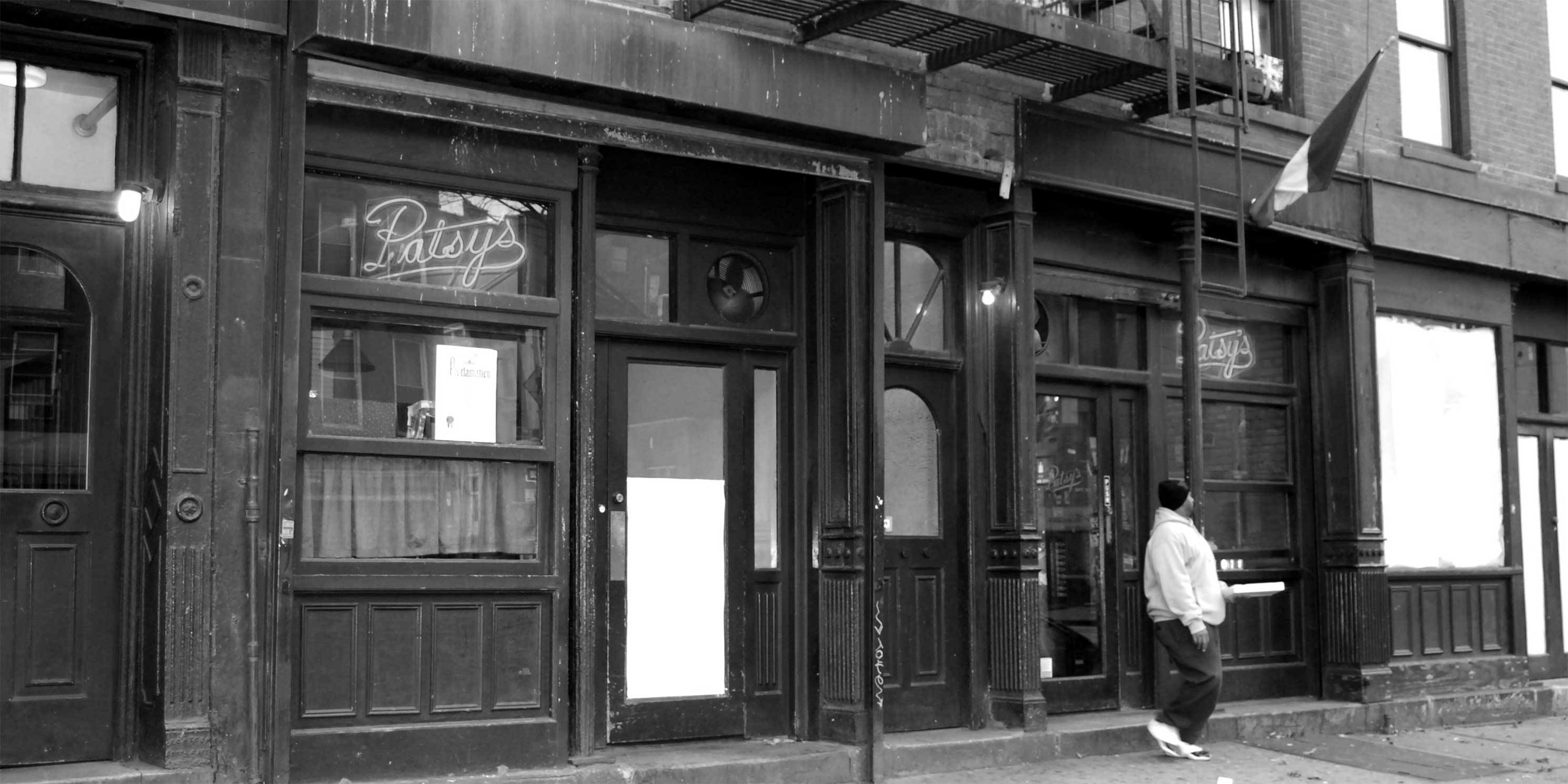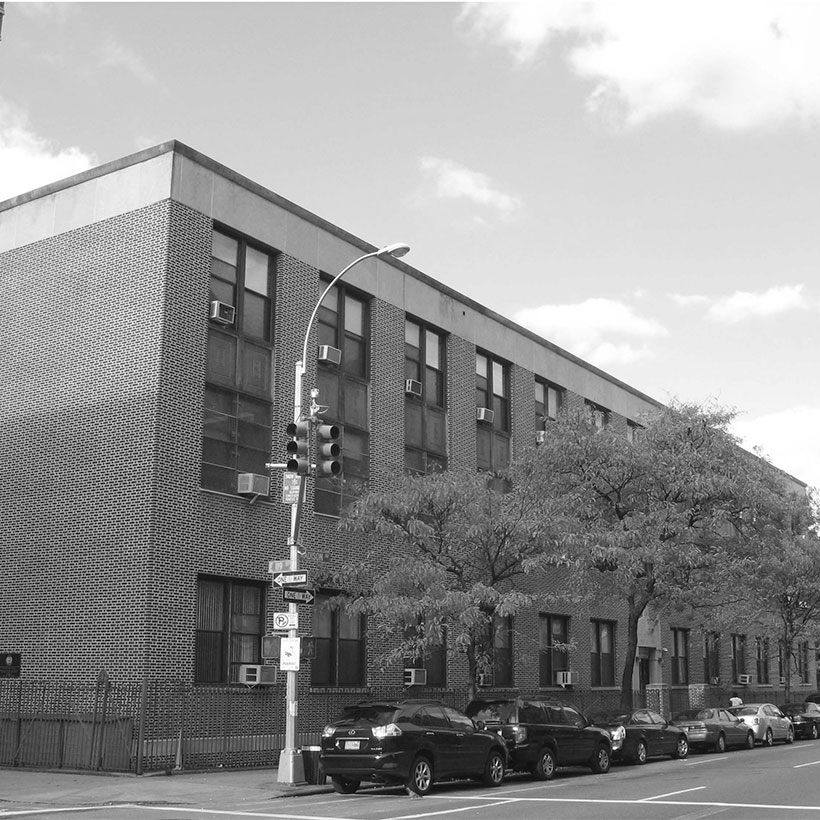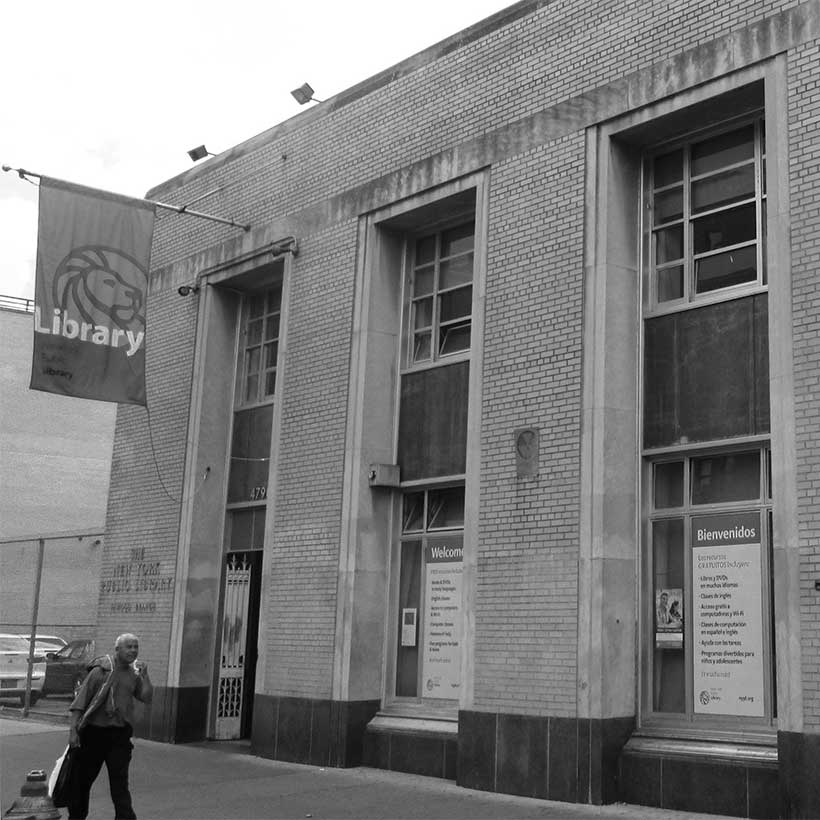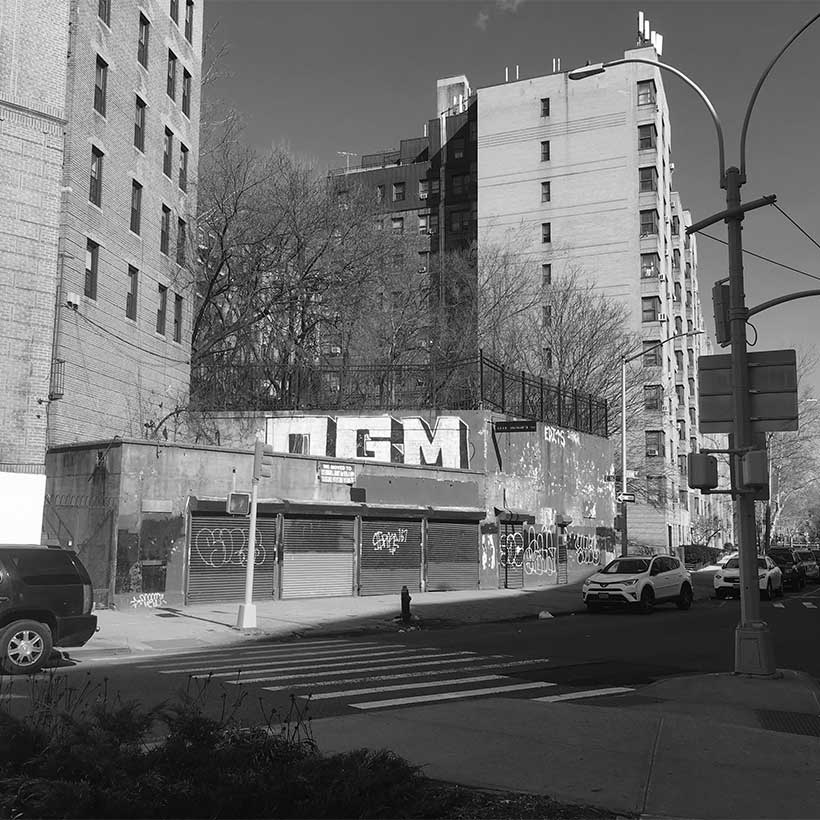Critical Concerns Remain for the East Harlem Rezoning
Recommendations regarding the East Harlem Rezoning propsoal
The Municipal Art Society of New York (MAS) has a number of critical concerns that we urge the City to address before we can support the East Harlem Rezoning proposal and the East Harlem Housing Plan. As discussed herein, we have recommendations regarding the undercounting of available development sites, potential displacement of area residents, shadow impacts, and the provision and protection of public space as well as broader matters of long-term affordability and preservation of existing dwelling units.
Download Testimony
MAS commends City Council Speaker Melissa Mark-Viverito and Manhattan Borough President Gale Brewer for their efforts as Chairs for the East Harlem Neighborhood Steering Committee, which resulted in the East Harlem Neighborhood Plan (EHNP). Several of our concerns could be addressed by incorporating the recommendations in the Neighborhood Plan and gleaned through the Steering Committee’s public engagement process.
Background
The New York City Department of City Planning (DCP) has proposed a series of land use actions, including zoning map amendments, zoning text amendments, and amendments to the Milbank Frawley Circle-East Urban Renewal Plan, that would affect a 96-block area in the East Harlem neighborhood of Manhattan Community District 11. In addition, the Department of Housing Preservation and Development (HPD) has issued a draft Housing Plan for East Harlem (Housing Plan) that seeks to preserve existing and development new affordable units on City-owned property within the rezoning project area. The six sites identified in HPD’s plan would result in an estimated 2,439 affordable units.
Almost 40 percent of East Harlem households have an annual income below $24,500 and the neighborhood as a whole has a median income of $30,973. The addition of approximately 6,000 new residents under the plan to this historically low income area has the potential to drastically change the socioeconomic conditions and character of the neighborhood.
Development Sites, Rent-Stabilized Units & Potential Direct Residential Displacement
MAS finds the Reasonable Worst Case Development Scenario (RWCDS), which frames the evaluation in the Draft Environmental Impact Statement (DEIS), does not accurately represent the most conservative potential development projection under the zoning proposal and thus could affect the accuracy of the socioeconomic conditions evaluation.
According to DCP MapPluto database, the rezoning area has 521 multi-family residential buildings that are underbuilt based on current zoning. This brings to light concerns that by increasing allowable density, the rezoning would put additional redevelopment pressure on these sites. The RWCDS identifies 102 projected and potential development sites, which excludes 66 percent of the aforementioned underbuilt residential buildings. While we acknowledge that there are reasonable arguments for excluding certain underbuilt multi-family buildings, such as lots that are currently under construction, the City’s calculation may underestimate future development facilitated by the rezoning.
Twenty-eight of the underbuilt properties contain rent-stabilized units registered with the New York State Division of Housing and Community Renewal (DHCR), and another 72 are likely to contain rent-stabilized units that are not registered. This is important because East Harlem is already losing rent-stabilized units at a fairly rapid pace. Between 2007 and 2014, the area incurred a net loss of 5.4 percent of its rent-stabilized housing, and areas affected by the 2003 rezoning have seen a decline of 7.5 percent. Given the socioeconomic conditions of the area, MAS is concerned that the rezoning will exacerbate this trend.
The DEIS states that multifamily buildings with rent-stabilized units are unlikely to be demolished and redeveloped because of the requirement to relocate displaced tenants, and therefore excluded from the RWCDS. MAS agrees in that buildings with rent-stabilized units should not be developed. However, just because these sites are not included in the EIS theoretical analysis does not prevent them from being developed in reality. The draft Housing Plan outlines strategies for preserving these affordable units (discussed herein under Housing Plan for East Harlem), but MAS believes these measures do not go far enough to ensure that rent-stabilized units would not be lost.
To strengthen the analysis of the DEIS, MAS recommends the RWCDS be amended to include underbuilt properties with rent-stabilized units as part of the selection criteria for development sites. This will provide a better understanding of potential direct residential displacement resulting from the rezoning. At the least, the city should provide an alternative analysis in the DEIS that evaluates these properties.
Indirect Residential Displacement & Rent-Stabilized Units
The DEIS socioeconomic analysis must evaluate an appropriate income band under the MIH program. We question the accuracy of the indirect residential displacement evaluation without an MIH option selected.
While the DEIS asserts, without specifying MIH income bands, that rezoning “would result in new populations with higher average incomes than the existing population…and that the incremental population may be large enough to affect real estate market conditions,” it concludes that the rezoning “would not result in significant adverse impacts due to indirect residential displacement.” MAS questions the validity of this conclusion without a full analysis of a specific MIH option. We counter that the rezoning could exacerbate existing market-rate forces, and without the proper preservation mechanisms for existing housing, lead to the displacement of a significant number of low-income residents.
As is the case with many rezonings that affect low-income communities, we maintain that the housing options under the current MIH income bands are out of reach for the majority of East Harlem households. According to the Housing Plan, 38 percent of the households in Community District 11 have an income that is less than 30 percent of the AMI ($24,500 for a three-person household). Meanwhile, the deepest affordability option under MIH would require that 20 percent of the residential floor area be affordable to households earning 40 percent of AMI ($32,640 for a three-person household).
Given this gap and the need for establishing targets for low and moderate AMI bands that accurately reflect neighborhood median incomes, the Neighborhood Plan recommended, as does MAS, that at least 20 percent of the affordable units should be at or below 30 percent of AMI.
There are 308 buildings with rent-stabilized units in the project area registered with the DHCR and an additional 135 are likely to have rent-stabilized units that are not registered. Although many of these buildings are not considered underbuilt, and owners might not have the incentive to demolish and redevelop these properties, they may be inclined to deregulate stabilized units or even illegally convert them into market-rate.
Because the DEIS does not evaluate potential impacts from illegal conversions of rent-stabilized to market-rate units and that the outlined strategies from the Housing Plan cannot guarantee that these units will be preserved, we recommend that the socioeconomic conditions analysis in the FEIS evaluates indirect residential displacement that takes into account illegal conversions and loss of rent-stabilized units.
Open Space
According to the DEIS, the rezoning area is significantly below the City’s planning goal for passive and active open space (0.50 and 2.0 acres per 1,000 residents, respectively). Despite the additional approximately 6,000 residents and 1,723 workers expected under the proposal and the added demand on the limited existing open space resources in the project area, the DEIS concludes that no significant indirect adverse impacts would occur because the increase would not exceed the 5 percent CEQR threshold.
Because of the limited amount of open space in the project area, MAS urges the City to pursue options for improving existing and creating new open space to accommodate the demands of the existing and future population of the project area. To improve area open space, MAS suggests that the DCP integrate the recommendations in the Neighborhood Plan. In addition, based on the the City-owned and Leased Properties dataset (COLP), 49 sites comprising a total of almost four acres within the rezoning study area are City-owned and classified as having “no current use.” Given the significant amount of underutilized property, we recommend that DCP examine these sites as potential locations for new park space. Moreover, given their relative concentration towards the northern section of the rezoning boundaries (between 122nd – 126th streets and 3rd – Park avenues), MAS encourages the city to examine the potential of creating an integrated network of park space.
As part of the open space inventory, the DEIS identifies the 5.86-acre East River Esplanade between 96th Street and 125th Street within ¼-mile of the project area. Although it is included in the inventory, the DEIS does not address the condition of the East River Esplanade or the limited access residents and workers in the project area have to it. For example, between 96th and 125th streets there are only four entry points to the esplanade (Stanley Isaacs Playground, Playground 103, Jefferson Park, and 120th street).
Since the DEIS uses the acreage of the esplanade in its open space ratio calculations and the amount of open space in the project area is less than the city average, we urge the city to commit to enhancing access to the East River Esplanade through improved wayfinding, signage, pedestrian bridges, new entry points, expanded bike lanes, and enhanced landscaping.
More importantly, in its current state, the East River Esplanade is in dire need of repair and maintenance. The 2014 CIVITAS East River Vision Plan, funded by the New York Community Trust and New York City Council, identified numerous issues including, but not limited to, deterioration of the structure, sinkholes, poor condition of the Pier 107 pavilion, a lack of basic amenities such as restrooms, poor upkeep, and the separation of pedestrian and bike lanes. The East River Esplanade is also a vital link in the East River Greenway. Based on these conditions, we urge the city to commit to addressing the necessary repairs and upgrades to this important resource.
Unmitigated Shadow Impacts
Although the DEIS shadow analysis concludes that the rezoning would result in significant shadow impacts on El Catano Garden, Jackie Robinson Garden, and Eugene McCabe Field, no mitigation measures are proposed for these resources. Given the limited open space in the area, we urge the City to examine design changes that eliminate or greatly reduce shadow impacts on these resources and create new open space in the area, as recommended in the Neighborhood Plan.
Zoning District Density
According to the EHNP, the community recommended an R9 or R9A zoning district to add more affordable housing units while preserving the neighborhood’s character. However, the proposed East Harlem Corridors Special District zoning text amendment designates areas along Third and Park Avenues as R10, allowing for smaller floorplates for towers, which would likely increase the height of buildings while reducing the viability of affordable housing production. Therefore, MAS encourages DCP to reconsider the R10 designation and special bulk, setback, and height regulations currently proposed under the zoning text amendment, and adopt R9 or R9A districts as recommended by the EHNP.
Rezoning Boundaries
The EHNP recommended that the rezoning boundaries include properties that stretch further south, in some cases to the upper East 90s. However, under the DCP proposal, the boundary excludes the areas south of East 104th Street. These areas have been rising in value due to their proximity to the Upper East Side as well as existing and proposed train lines. Moreover, close to a thousand rent-regulated dwelling units have been lost between East 96th and 104th streets of within a span of eight-years (between 2007 and 2014).
The EHNP stated that additional density as well as affordable housing opportunities could be spread over a larger area, which would reduce the necessity of R10 buildings along 3rd and Park Avenues. Moreover, the pressure to build luxury housing north of East 96th Street might be tempered by mandatory inclusionary housing. As such, MAS echoes comments made by Manhattan President Gale Brewer that the current and potential market attraction to this area warrants its inclusion within the rezoning boundaries to create preservation districts and institute mandatory housing requirements for new development.
Housing Plan for East Harlem
Preservation of Existing Affordable Units
MAS believes that many of the preservation strategies outlined in HPD’s Housing Plan (released May 1, 2017) have great potential for success. However, the most promising ones have yet to be implemented. Because the rezoning is likely to move forward before the Housing Plan, MAS contends that the City does not have the mechanisms to effectively prevent the loss of existing affordable housing units, which will be more pressing with the significant amount of development expected under the rezoning.
According to the draft Housing Plan, 75 percent of East Harlem homes are rent-stabilized, rent-controlled, and/or receive some form of governmental assistance that limits the amount of rent that can be charged. The stated priority of the Housing Plan is to protect residents who want to remain in East Harlem.
To achieve this goal, HPD aims to maintain affordable units in their portfolio by proactively informing owners about financial incentives the City can provide. The Housing Plan also outlines a number of forward thinking strategies that we find worth pursuing, including the implementation of community land trust models, expansion of legal representation for tenants, and execution of the “certificate of no harassment.”
While these ideas have great potential, we recognize that they are for the most part in exploratory phases or will be included as pilot programs. Therefore, we strongly urge the City to employ these preservation strategies in concert with the rezoning. Furthermore, we would like to see the final version of the Housing Plan include examples of projects in which preservation incentives for affordable housing have been successfully implemented in light of significant development and deregulation pressures.
Development of New Affordable Units
According to the Housing Plandraft, the City will prioritize development of over 2,400 affordable units on City-owned properties involving six different projects.
Although the City has committed to deeper levels of affordability for the following projects: Lexington Gardens II, Sendero Verde (SustaiNYC), and MTA Bus Depot sites, where at least 20 percent of all units will be set aside for households earning up to $24,480 for a three-person family (30 percent of AMI), the plan doesn’t specify income bands for the remaining 80 percent of units. MAS concurs with the Neighborhood Plan recommendations to maximize deep levels of affordability and target income bands that reflect the neighborhood median income. Furthermore, we encourage the City to ensure that the units created on City-owned property at the Sendero Verde development would be permanently affordable.
Additional Recommendation
To increase transparency and aid public oversight, MAS recommends that DCP make public all its mapping and GIS data related to the proposal. This includes shapefiles for the project and study areas, potential and projected sites, and other pertinent files. Making this data accessible will encourage more informed recommendations by the public.
Conclusion
We reiterate that our support for the rezoning and housing plan is conditioned upon the incorporation of our recommendations in the proposal and FEIS evaluation. Given the current socioeconomics of the area and huge influx of new residents and workers expected with the rezoning, we want to ensure that all potential opportunities for preserving existing and creating new affordable housing have been explored and that the neighborhood’s character will be maintained.
Thank you for the opportunity to provide comments on this critically important proposal.



